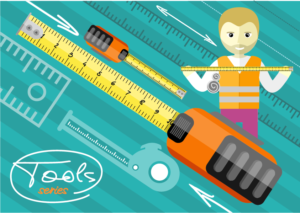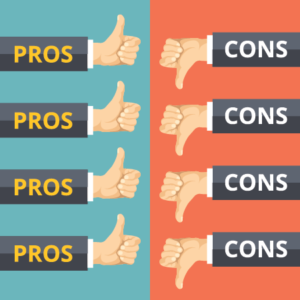DIY vs Professional Web Building
I like to cut my own hair. Some people think I do a good job. Others think I’m nuts. I do it because, well, I’m not really sure. Maybe to be provocative. Probably to save money. Could be I like the illusion of control. In any event, after a few months of fun with scissors, I inevitably end up back in my stylist’s chair, watching him laugh at my rough coif in the mirror.
Cutting your own hair is a lot like designing your own website. You’ll amaze friends, shave costs in the short run, never quite feel finished and end up with something choppy and unmanageable. Take it from someone who’s done both and lived to balk about it.
Sometimes DIY is DUMB

Admittedly, I am from the creative side of web design and not the coding. So I wanted the easiest entry point. Over the years, I’ve attempted my own website, online store and blog–all of which wasted my time and money and still remain relatively unknown except to a few relatives. In the end, I’ve seen some pretty tech-savvy people give up, too, and go with a professional website developer.
You may be a quick study, up for a challenge and impressed by the convincing commercials for DIY website builders. Nothing to it. Badda bing, badda boom. Let me just say, everyone knows starter kits are for amateurs. Not only will you be investing the time it takes to learn something, but you’ll soon discover some things just aren’t possible.
In addition to a website looking impressive (design) and having lots of interesting writing (content), you have to ask, “Can it do anything?” (functionality) and “Can it be found?” (search optimized).
Type of Site
First you must consider what you want your site to achieve:
Brochure Site: Establishes a credible web presence by providing basics such as company history, product descriptions, prices and contact information.
E-commerce Site: In addition to being able to add, remove and edit pages and products, the site must include a shopping cart, payment system, inventory control, sales analytics, return and refund policy, etc.
Internal Site: Usually a custom app developed specifically to run your business with complex functions like inventory control, parts and manufacturing, payroll, deliveries, etc.
From Drag-n-Drop to Custom Concierge
 DIY Website Builders
DIY Website Builders
These drag and drop templates from GoDaddy, Wix, SquareSpace, etc., require no HTML, CSS or other coding skills. And, unless you plan to start a blog elsewhere and link back, no WordPress experience. They’re good for freelancers and small business people with low budgets like artists, writers, photographers, wedding planners and local retailers. For just a few dollars a month, you’ll have a website you can easily edit, update and publish instantly without calling tech support. The downside is there’s limited navigation, no blog capability, weak e-commerce (if any), antiquated graphics like Flash and no integrated analytics. Perhaps worst of all is the lack of real search engine optimization. You’ll pay less than $100 a year plus they will do a domain registration and hosting for about $40. But add-ons add up and, as they tend to upsell, could wind up costing another $100.
WordPress
This popular platform is more flexible and customizable than a simple website builder but does require some programming skills to utilize the design templates and plugins. There are over 4,000 free website themes to choose from. If you’re not comfortable around domain names and hosting, you can hire a business like HostGator, DreamHost or LiquidWeb.
Professional Sites
Do the words Photoshop, logo resolution, picture editing and overlays sound like a foreign language? Do hyperlinks make you hyper? If so, you might consider “leaving the driving to us.” Using advanced technical and creative tools and the latest HTML coding, a professional website developer will give you a mobile-friendly site with e-commerce, a built-in blog, Google maps, dynamic data analytics and some other bells and whistles you didn’t even know you wanted.
Pros and Cons of a DIY Website Design

- A DIY site’s customer support may mean talking to a stranger every time you need help, while a custom site means ringing up a dedicated web designer who knows your site intimately.
- Going with a DIY web builder may be cheaper but, as the name implies, you may end up with a site that looks and sounds like you did it yourself. A custom website will probably give your company, and therefore your brand, a more polished and professional appearance and a better user experience.
- Like a carefully crafted sandcastle on a summer shore, if you leave your DIY website provider, you can’t take it with you. When you stop paying or switch to a more sophisticated platform (as you inevitably will), all the code and content disappears like the quick shake of an Etch-A-Sketch. You can’t get it back. You’ll just have to start over from scratch. When you work with a web developer who builds your site from the ground up, you own everything on it. It’s completely portable if you want to part ways.
- Okay, so now you have your new DIY site design and you’re pretty proud of it. But what about the clever and convincing words that will entice visitors to stop by and engage them to stick around for a while? That’s where a professional web design company with site content writers on staff really excels over DIY. Be sure to look for an agency who includes content in their package prices.
The High Cost of Doing It Yourself
If you build it, they will come. Right? Wrong. Unless your content is optimized for Google and other search engines, your business might as well be operating in a vacuum or on Venus. DIY sites are not set up to be found by search. There is no image and video indexing SEO. In fact, in some cases, images are not even visible to Google and Bing. WordPress can install Google Site Search. Of course, there’s a plugin for that.
In the end, you get what you pay for. So which one are you? Do you need a quicky website with domain name and hosting provided, counting on having a way with words? Are you WordPress proficient with oodles of hours to fiddle with themes and play with plugins? Or do you have at least $3,000 to invest in a finished site with custom design, creative content, future-oriented functionality and superior support?
If you don’t want to cut your own hair or end up pulling it out, call us for a professional website, complete with content. We’ll have you looking (and sounding) good in no time at a budget-friendly price.





